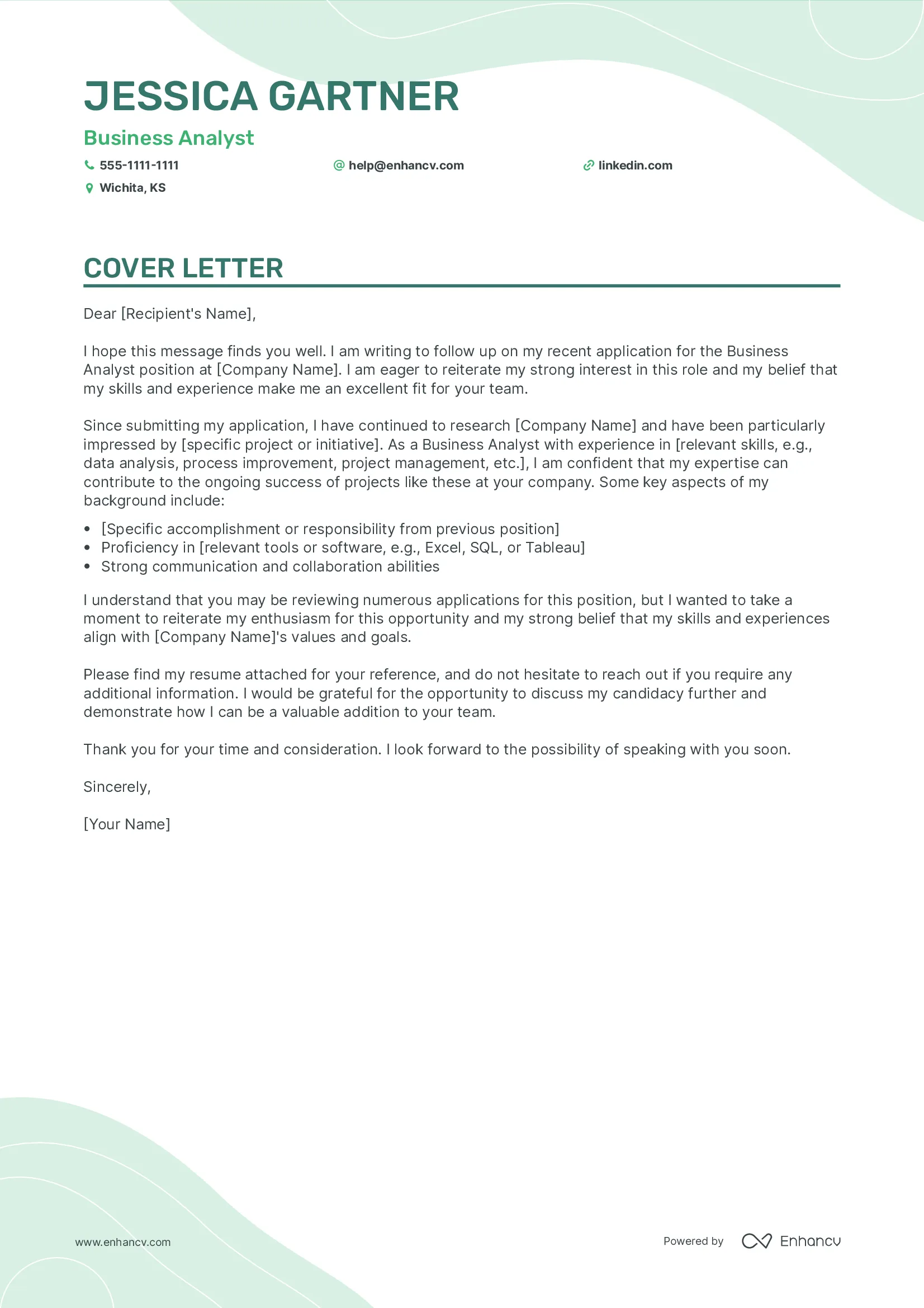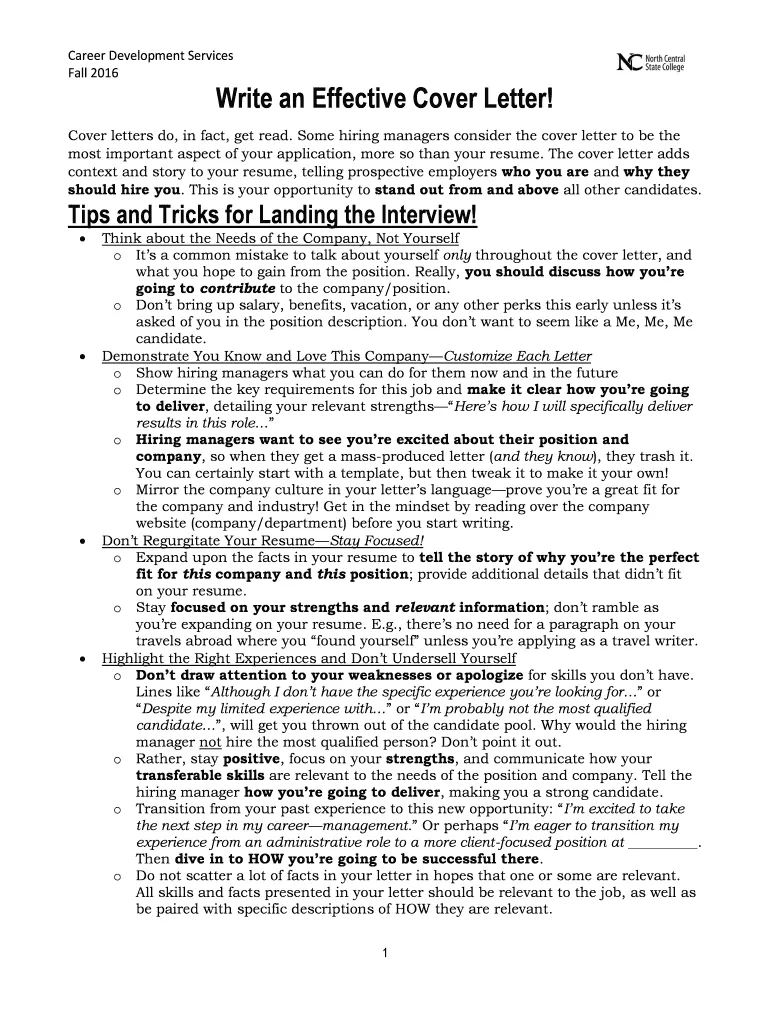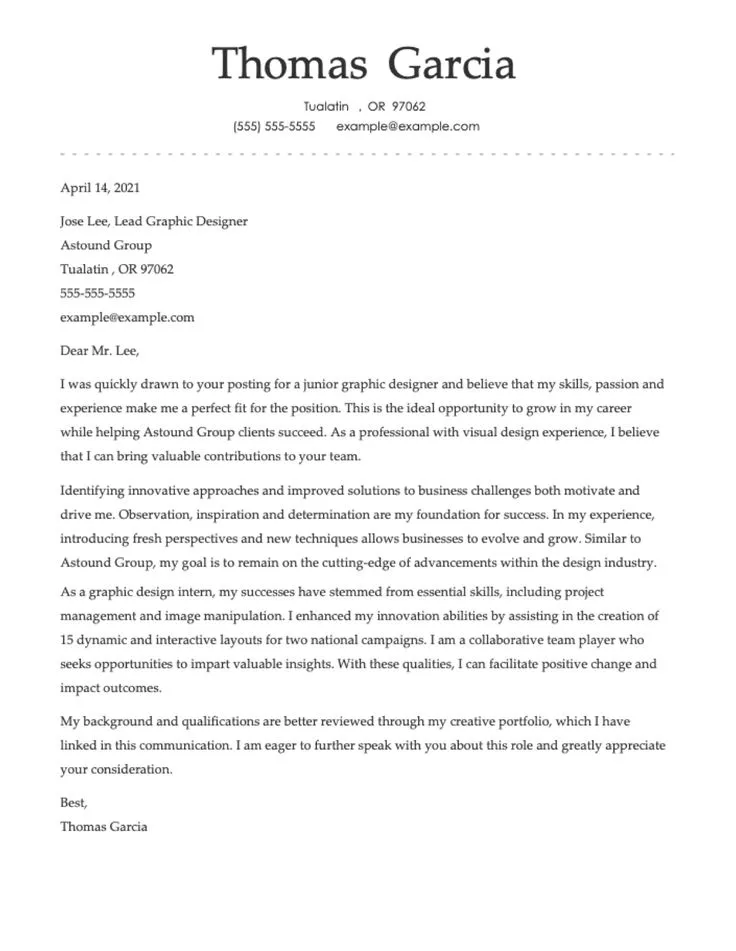Why Cover Letters Still Matter
In an era dominated by online applications and digital resumes, the humble cover letter might seem like a relic of the past. However, the truth is that cover letters still hold significant weight in the job application process. They provide a valuable opportunity to introduce yourself, express your enthusiasm for the role, and demonstrate your unique qualifications beyond what’s listed on your resume. A well-crafted cover letter can be the deciding factor in whether or not you secure an interview, especially in competitive job markets. It allows you to personalize your application, showcase your writing skills, and highlight the aspects of your experience and personality that make you a perfect fit for the specific position and company. Ignoring the cover letter is a missed opportunity to make a strong first impression and potentially set yourself apart from other applicants.
Moreover, cover letters allow you to address any potential red flags in your application, such as gaps in your employment history or a career change. By proactively explaining these issues in your cover letter, you can mitigate any negative perceptions and demonstrate your ability to navigate challenges. Cover letters also provide a platform to showcase your research on the company and demonstrate your understanding of their mission, values, and culture. This level of personalization shows that you’ve taken the time to genuinely consider the opportunity and are not simply sending out a generic application. In essence, a well-written cover letter isn’t just an accessory to your resume; it is an essential tool for career advancement, helping you land interviews and ultimately, the job.
Cover Letter Writing Basics
Before diving into the specifics, it’s essential to establish a solid foundation in cover letter writing basics. First and foremost, your cover letter should be concise, typically one page in length. Recruiters and hiring managers are busy, so get straight to the point and avoid unnecessary fluff. The format should be professional and easy to read. Use a standard font like Times New Roman, Arial, or Calibri, with a font size between 10 and 12 points. Maintain consistent formatting throughout the document, including margins, spacing, and paragraph alignment. Address your cover letter to a specific person whenever possible. Research the name of the hiring manager or recruiter and use their title and name in the salutation. This demonstrates your attention to detail and personalizes your application.
The tone of your cover letter should be professional and enthusiastic, but avoid sounding overly formal or generic. Use active voice, strong verbs, and a positive tone to showcase your personality and passion for the role. Tailor your cover letter to each specific job you apply for. Generic cover letters are easily spotted and often discarded. Instead, carefully review the job description and align your skills, experience, and qualifications with the requirements outlined. Highlight the most relevant aspects of your background and explain why you are the best fit for the position. Proofread your cover letter meticulously before submitting it. Typos, grammatical errors, and inconsistencies can reflect poorly on your attention to detail and professionalism. Have someone else review your cover letter as well, as a fresh pair of eyes can often catch errors you may have missed. The basics are important and will help you stand out.
Formatting Your Cover Letter

Effective formatting is crucial for making your cover letter visually appealing and easy to read. Begin with your contact information at the top, including your name, address, phone number, and email address. You may also include a link to your LinkedIn profile or online portfolio, if applicable. Follow this with the date and the hiring manager’s contact information (if known). Use clear and concise headings to organize the content of your cover letter. This helps the reader navigate the document and quickly understand the key points you’re trying to convey. Break up large blocks of text into smaller, digestible paragraphs. Use bullet points to highlight specific skills, achievements, or responsibilities, as this makes the information more accessible and easier to scan. Maintain consistent spacing between paragraphs and sections to create a clean and professional appearance.
Choose a professional font that is easy to read, such as Times New Roman, Arial, or Calibri. Ensure the font size is between 10 and 12 points, and avoid using overly decorative or stylized fonts that can detract from the content. Pay attention to your margins. Set your margins to a standard width (typically 1 inch on all sides) to ensure the text is centered on the page and doesn’t appear cramped or cluttered. Consider using a template as a starting point, but be sure to customize it to reflect your individual style and the specific requirements of the job you’re applying for. There are many cover letter templates available online, but it’s essential to tailor them to your needs rather than simply filling in the blanks. The ultimate goal is to produce a document that is both well-formatted and showcases your skills and experiences effectively.
Crafting a Compelling Opening
The opening paragraph of your cover letter is your first and perhaps only chance to capture the reader’s attention. Start strong by immediately stating the position you’re applying for and where you saw the job posting. Then, immediately express your enthusiasm for the opportunity and the company. Show the hiring manager that you’re genuinely excited about the role and what the company does. Avoid generic phrases such as ‘I am writing to express my interest’ or ‘I am a highly motivated individual.’ Instead, try something more engaging, such as ‘I was thrilled to see the opening for a Marketing Manager at [Company Name], as I have long admired your innovative approach to…’.
In the opening paragraph, consider including a brief, attention-grabbing statement about your most relevant skill or accomplishment. This could be a specific achievement or a unique qualification that makes you stand out from other candidates. Alternatively, you could start with a brief statement of your understanding of the company’s mission and how you can contribute to it. Tailor your opening to the specific job and the company you’re applying to. Research the company’s values, culture, and recent accomplishments and use this information to personalize your opening. Make a connection to the reader by mentioning a mutual contact or referring to a company event or initiative that resonated with you. Remember, the goal of the opening paragraph is to grab the reader’s attention and encourage them to keep reading. It sets the tone for the rest of your cover letter and can make or break your chances of making a positive first impression. Get to the point and tell them why you are the right person for the job.
Highlighting Your Skills and Experience
The body of your cover letter is where you showcase your skills and experience. This is the heart of your application, so make sure it is clear, concise, and directly relevant to the job requirements. Review the job description carefully and identify the key skills and qualifications the employer is seeking. Then, in your cover letter, provide specific examples of how your experience and skills align with those requirements. Use the STAR method (Situation, Task, Action, Result) to describe your accomplishments. This structured approach helps you present your experience in a clear and compelling way. For example, describe the situation, the task you were assigned, the action you took, and the positive results you achieved. Whenever possible, quantify your accomplishments. Use numbers and data to demonstrate the impact of your work. For example, instead of saying ‘Increased sales,’ say ‘Increased sales by 15% in one quarter’.
Focus on the most relevant aspects of your background. Don’t try to cram in everything you’ve ever done. Instead, select the experiences and skills that are most closely related to the job and highlight those. Use action verbs to describe your responsibilities and achievements. Action verbs bring your accomplishments to life and make your cover letter more dynamic and engaging. Tailor the language to the specific industry and company. Use industry-specific jargon and keywords to demonstrate your understanding of the field and show the employer that you’re a good fit for their team. Emphasize your soft skills as well as your hard skills. Employers value both, so be sure to highlight your communication, teamwork, problem-solving, and leadership abilities. By effectively showcasing your skills and experience, you can demonstrate your ability to excel in the role and make a strong case for why you should be hired. Show don’t tell is the key.
Demonstrating Your Value to the Employer

A successful cover letter not only highlights your skills and experience but also clearly demonstrates the value you bring to the employer. This requires more than just listing your qualifications; it means articulating how your skills and experiences will benefit the company and contribute to its success. Research the company’s goals, challenges, and values. Understand what the company is trying to achieve and identify how your skills and experience can help them reach those goals. Then, in your cover letter, explain how you can solve their problems, meet their needs, and help them succeed. Provide specific examples of how you’ve added value in previous roles. What impact did your work have on the bottom line, the team, or the company as a whole? Quantify your results whenever possible. Use metrics to showcase your accomplishments and demonstrate the tangible benefits you’ve brought to previous employers.
Focus on what you can do for the company, not just what the company can do for you. While it’s important to express your enthusiasm for the role, make sure the primary focus is on how you can contribute to the company’s success. Show that you understand the company’s needs and are prepared to meet them. Demonstrate your understanding of the industry and its trends. Show that you are up-to-date on industry developments and that you have a clear understanding of the challenges and opportunities the company faces. By clearly communicating your value proposition, you can make a compelling case for why the employer should hire you. Your cover letter should leave the reader with a clear understanding of how you can help them achieve their goals and contribute to their success.
Tailoring Your Cover Letter to the Job
Generic cover letters are a major turn-off for hiring managers. Tailoring your cover letter to each specific job is one of the most important steps in the application process. Start by carefully reviewing the job description. Identify the key skills, qualifications, and requirements the employer is looking for. Pay close attention to the language used in the job description and try to mirror this language in your cover letter. Research the company and the role. Understand the company’s mission, values, and culture. Identify the key responsibilities and challenges of the role. Then, tailor your cover letter to address these specific points.
Highlight the skills and experiences that are most relevant to the job. Don’t try to include everything; instead, select the aspects of your background that are most closely aligned with the job requirements. Provide specific examples of how your skills and experience match the job requirements. Use the STAR method to describe your accomplishments and quantify your results whenever possible. Customize your cover letter to reflect the company’s culture and values. If the company values innovation, creativity, and teamwork, be sure to highlight these qualities in your cover letter. Show how your values align with the company’s and how you can contribute to its culture. Always personalize your cover letter. Address the hiring manager by name, if possible. Mention something specific about the company or the role that caught your attention, and explain why you are excited about the opportunity. Tailoring your cover letter demonstrates your genuine interest in the job and increases your chances of getting an interview.
Showcasing Your Personality
While professionalism is key, it’s also important to let your personality shine through in your cover letter. Your cover letter is an opportunity to show the hiring manager who you are beyond your skills and qualifications. Infuse your writing with your unique voice and style. Use language that reflects your personality and your genuine enthusiasm for the job. Avoid sounding like a robot; instead, write in a way that feels authentic and engaging. Show your personality by sharing your passions and interests. What are you passionate about outside of work? What makes you tick? Sharing a few relevant details about your hobbies or interests can help you connect with the reader on a personal level.
Use humor, when appropriate, to add personality to your cover letter. A well-placed joke or witty remark can make your cover letter memorable and help you stand out from the competition. However, be sure to use humor appropriately and avoid anything that could be considered offensive or unprofessional. Use storytelling to captivate the reader and showcase your personality. Share a brief anecdote or a personal experience that highlights your skills, character, and passion for the job. Be yourself. Don’t try to be someone you’re not. Hiring managers can spot insincerity easily. Write in a way that feels natural and reflects your true personality. The goal is to create a connection with the reader and make them want to learn more about you. The more genuine you are, the more likely you are to make a lasting impression.
Proofreading and Editing

Proofreading and editing are critical steps in ensuring your cover letter is polished and professional. A single typo or grammatical error can undermine your credibility and make you look careless. Proofread your cover letter meticulously for any errors. Check for typos, spelling mistakes, grammatical errors, and punctuation errors. Read your cover letter slowly and carefully, and consider reading it aloud to catch any errors you might miss. Use a spell checker and grammar checker to help identify potential mistakes. These tools can be helpful, but they are not foolproof, so don’t rely on them entirely. Have someone else review your cover letter. A fresh pair of eyes can often catch errors you may have missed. Ask a friend, family member, or career counselor to review your cover letter and provide feedback. Pay close attention to the overall tone and clarity of your cover letter. Ensure your writing is clear, concise, and easy to understand. Eliminate any unnecessary jargon or complex language that could confuse the reader.
Check for consistency in formatting and style. Make sure your margins, fonts, spacing, and paragraph alignment are consistent throughout the document. Ensure your tone is consistent throughout your cover letter. Your language should be professional and enthusiastic. Proofread your cover letter multiple times, and edit it as many times as necessary. Take breaks between proofreading sessions to avoid fatigue and ensure you’re able to see errors more clearly. By taking the time to proofread and edit your cover letter, you can ensure it is a polished and professional representation of your skills and qualifications. A well-edited cover letter demonstrates your attention to detail and increases your chances of making a positive impression on the hiring manager.
Cover Letter Examples for inspiration
Looking at cover letter examples can be a great way to gain inspiration and learn from the strategies of successful applicants. Search for cover letter examples online. There are many websites that offer cover letter templates and examples. Look for examples that are relevant to your industry and the type of job you’re applying for. Analyze the structure and content of the examples. Pay attention to how the writers introduce themselves, highlight their skills and experience, and demonstrate their value to the employer. Take note of the language, tone, and style used in the examples. Observe how the writers use action verbs, quantify their results, and tailor their cover letters to specific job descriptions. Adapt the examples to fit your own situation. Use the examples as a starting point, but be sure to customize them to reflect your own skills, experience, and the specific requirements of the job you’re applying for.
Focus on examples that are well-written and professional. Avoid using examples that are poorly formatted, full of errors, or generic. Modify the examples to reflect your own personality and style. Make your cover letter unique and memorable. The best cover letter examples are those that provide a solid foundation for your own writing and offer valuable insights into the process. By studying examples and adapting them to your own situation, you can create a cover letter that effectively showcases your skills, experience, and value to the employer. This will make you stand out from the competition.
